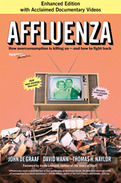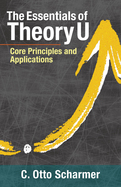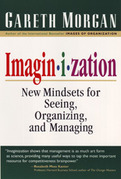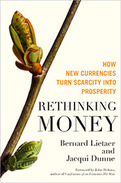
Many organizations that place emphasis on teamwork tend to value people who promote themselves and think on their feet. Meanwhile, quiet types like programmers and other techies, who sit alone and become absorbed in their work, are often overlooked or misunderstood. But introverts can be highly effective influencers when they forego an extrovert’s in-your-face techniques and use their natural strengths to make a difference.
In this video workshop based on her book Quiet Influence: The Introvert's Guide to Making a Difference (Berrett-Koehler), Jennifer Kahnweiler identifies specific workplace challenges for introverts—including "people exhaustion"—and helps you investigate strengths and weaknesses in the context of a real-life work scenario. The bulk of this video shows how introverts can succeed at work by cultivating six key strengths:
- Taking Quiet Time to unleash creativity and sustain energy
- Preparation to prove the value of your proposal and involve others
- Engaged Listening to gain increased understanding of situations
- Focused Conversations to solve problems and work through conflict
- Writing to advocate a position, and motivate others
- Thoughtful Use of Social Media to grow relationships and move people to action
Several exercises will help you connect with these concepts. Introversion didn’t derail Tim Cook or Warren Buffett. It doesn’t have to impede your livelihood, either. This video was produced in partnership with Berrett-Koehler Publishers.
Jennifer B. Kahnweiler, Ph.D., is a global speaker, bestselling author and thought leader who helps introverts lead with quiet confidence. Her bestselling books, The Introverted Leader, Quiet Influence, and The Genius of Opposites, have been translated into 14 languages.
Jennifer has worked with hundreds of organizations including GE, Hewlett-Packard, NASA, Boeing and the CDC She is a Certified Speaking Professional (CSP), granted to only 8% of the National Speaker’s Association and she invites you to visit her website at jenniferkahnweiler.com/.
2014
This edition examines the role overconsumption played in the 2008 economic collapse, & how our economy and society have changed since.
- New edition of a classic book-the first two editions sold over 150,000 copies
- Still the most thorough diagnosis of the disease of overconsumption: symptoms, causes, consequences, and cures
- Updated to incorporate the 2008 economic collapse, new measures of societal health, and new policy prescriptions
Welcome to the enhanced edition of Affluenza! Each chapter of this updated third edition features scenes from the popular national PBS specials “Affluenza” and “Escape from Affluenza,” co-produced by Affluenza co-author John de Graaf and hosted by National Public Radio's Scott Simon.
This iconic book shows how problems ranging from loneliness, endless working hours, and family conflict to rising debt, environmental pollution, and rampant commercialism are all symptoms of this global plague. In the enhanced edition you'll see hilarious skits including the frightening original diagnosis of “affluenza” and the shocking “surrender of the Joneses.” You'll meet experts and hear from ordinary people about how affluenza has affected their lives and what they are doing about it. You'll see victims of shopping fever and swollen expectations as they roam through the “affluenza hot zones” of tourist-destination shopping malls, watch in horror as marketers plan the manipulation of children, take a quick trip through the history of this dreaded disease, and see its often invisible but terrible consequences made visible. But it's not all gloom and doom—far from it. You'll also drop in on a simplicity circle (“affluholics anonymous!”), wander through a magical marsh where you come out enriched “and your wallet is still as full as when you left home,” and share the life of an urban family who is beating the bug! The authors also trace the role overconsumption played in the Great Recession, discuss new ways to measure social health and success (such as the Gross Domestic Happiness index), and offer policy recommendations to make our society more simplicity-friendly.
Remember that nine out of ten doctors recommend this book as the cure for affluenza! Happy reading and…happy viewing!
There are a total of 23 videos spanning 39:36 minute. File size: 379.7 MB
Based on two highly acclaimed PBS documentaries watched by 10 million viewers, Affluenza uses the whimsical metaphor of a disease to tackle a very serious subject: the damage done-to our health, our families, our communities, and our environment-by the obsessive quest for material gain. In cleverly titled chapters such as "Swollen Expectations" and "A Rash of Bankruptcies," the authors examine the origins, evolution, and symptoms of the affluenza epidemic. But they also explore cures and suggest strategies for rebuilding families and communities and for restoring and respecting the earth.
The 2008 economic collapse demonstrated how prophetic this book was. The third edition examines the role overconsumption played in the collapse and how our economy and society have changed since then. The authors also discuss new ways to measure social health and success, such as the Gross Domestic Happiness index, and offer policy recommendations to make our society more simplicity-friendly. The underlying message isn't to stop buying; it's to buy carefully and consciously, remembering, always, that the best things in life aren't things.
affluenza, n. a painful, contagious, virally transmitted condition of overload, debt, anxiety, and waste resulting from the dogged pursuit of more.
This book offers a concise, accessible guide to the key concepts and applications in Otto Scharmer's classic Theory U. Scharmer argues that our capacity to pay attention coshapes the world. What prevents us from attending to situations more effectively is that we aren't fully aware of that interior condition from which our attention and actions originate. Scharmer calls this lack of awareness our blind spot. He illuminates the blind spot in leadership today and offers hands-on methods to help change makers overcome it through the process, principles, and practices of Theory U. And he outlines a framework for updating the “operating systems” of our educational institutions, our economies, and our democracies. This book enables leaders and organizations in all industries and sectors to shift awareness, connect with the highest future possibilities, and strengthen the capacity to co-shape the future.
1997
There is no time more confusing than when we are in the midst of a world waiting to be born. Gareth Morgan's landmark book makes the case that there is some profound and productive business sense in the current chaos and shows how ideas about management, roles, responsibilities, and work itself need to change in many different ways if we are to take full advantage of the unique opportunities that evolving markets and organizations present.
Imaginization details the process of "imaginization" (imagination + organization)-a new core competence that's essential for leading and managing in a world characterized by flux and change. This process answers the call for more open, flexible, creative forms of organization and management to meet the challenges of a networked, electronic age.
Dozens of books call for new management practice, often selling just one or two pet theories or ideas. This is the first book to show how to develop the multiplicity of ideas that are going to be needed. The critical difference in Gareth Morgan's work is that it focuses on the 'how-to's:
o How to create new, more flexible forms of organization
o How managers can develop new understandings of their roles and their problems and learn to see situations in different ways
o How they can develop more flexible approaches to strategy and piece together their own creative toolbox
o How organizations can be centralized and decentralized at the same time
Using simple yet powerful graphics to illustrate and communicate his message, Morgan builds on the insights of his classic Images of Organization which pioneered the idea of using metaphor to create new insights in organization and management.
Imaginization teaches by example. Each chapter focuses on how the approach can be put into practice, providing dozens of concrete illustrations and case studies drawn from real-world organizational change projects and management development programs.
From page one, Morgan draws a complex, but coherent methodology for achieving success in today's organizations. Few management books address the range of issues raised here--creativity, strategy, empowerment, new structures, and many more. Imaginization brings them all together, demonstrating how all of these issues can be approached through the same creative process.
- New thinking from the bestselling author of Images of Organization (over 250,000 copies sold)
- A practical guide that shows how to put "out of the box" thinking into practice
- Teaches managers to unleash the creative abilities of employees, develop new ways of organizing, and remain open, energized, and empowered in the face of constant change
- Copublished with Sage Publications
BOTH PRAGMATIC AND INSPIRING, The Joy of Working from Home shows the current or prospective home-office worker how to set up an efficient home office and provides the support for making what for many will be a major life change. Combining detailed, useful information with encouraging advice and anecdotes, the book gives numerous positive examples of individuals who have successfully made the transition. The author-himself a home-worker for many years-provides realistic methods for striking a healthy balance between business and personal life.
Addressing the vital questions of lifestyle, and the difficult trade-offs between work and personal priorities, The Joy of Working from Home offers guidelines for wisely allocating every home worker's most valuable resource: time. It shows:
o how to organize both work and workspace efficiently;
o the inherent advantages of using a home-based office to achieve practical and personal rewards;
o techniques for avoiding the stress and distress of letting the demands of work and family intermingle.
Drawing on the experiences of many home-based workers, this book helps solve the problems of self-discipline, financial insecurity, isolation, and interruptions. It also offers valuable advice on dealing with the vulnerabilities that inevitably come with self-employment-creating a professional image, maintaining a positive attitude, nurturing the capacity to persist against obstacles, and developing the flexibility to deal with a variety of clients or customers.
The practical aspects of running a business out of a home office are also addressed. The Joy of Working from Home provides useful strategies for creating a business plan, low-cost marketing techniques, tips for networking in the community, and ways to keep expenses down. There is down-to-earth advice for avoiding the pitfalls of zoning and tax requirements, information on purchasing office equipment and supplies, and guidelines for contracting outside services. A resource section creates access to important publications, home-based business associations, government agencies, and database information for effective business and professional marketing.
This book will appeal to a broad spectrum of current and prospective home office candidates, including the newly self-employed professional, the budding entrepreneur, those weary of the corporate work environment or long commutes, and those determined to restore the balance between their personal and professional lives.
- Written for the 30 million people currently working from home, and the millions more-predicted to embrace one-third of the work force-who will take advantage of this alternative in the next few years
- A complete guide for meeting the practical and personal challenges of successfully working from home on either a part-time or full-time basis
2013
Rethinking Money demonstrates that new currencies can not only resolve money's inadequacies but also energize new behaviors that can deliver the healthier world we fervently desire.
As the United States struggles and the economies of Europe stagger, we fail to see a way out of this agonizing cycle of repeated financial meltdowns. In fact, there are thousands of ways to solve not only our recurring fiscal crises but our ongoing social and ecological debacles as well. Solutions are already in place where terrible problems once existed. The changes came about not through increased conventional taxation, enlightened self-interest, or government programs but by people simply rethinking the concept of money. With this restructuring, everything changes. In this visionary book, Bernard Lietaer and Jacqui Dunne explore the origins of our current monetary system—built on bank debt and scarcity—revealing the surprising and sometimes shocking ways its unconscious limitations give rise to so many serious problems. But there is hope. The authors present stories of ordinary people and their communities using new money, working in cooperation with national currencies, to strengthen local economies, create work, beautify cities, and provide education—and so much more is possible. These real-world examples are just the tip of the iceberg—over 4,000 cooperative currencies are already in existence. The book provides remedies for challenges faced by governments, businesses, nonprofits, local communities, and even banks. It demystifies a complex and critically important topic and will strike a deep chord with readers eager to find innovative, meaningful solutions that will do far more than restore prosperity—it will provide the framework for an era of sustainable abundance.- Describes an innovative way ordinary people are creating solutions to address a wide variety of problems globally
- Reveals both the devastation caused by our current money system and ways new currencies are being designed to repair that damage
- Coauthored by one of the worlds leading experts in money systems and an award-winning journalist
- Click here for the press release; contact [email protected] for media review copies
There is a wayin fact, thousands of waysto stop the seemingly inevitable slide toward global self-destruction. Solutions are already in place throughout the world where terrible problems once existed. The changes came about not through the redistribution of wealth, increased taxation, enlightened corporate self-interest, or government handouts but by people simply rethinking the concept of money and acting from this new perspective. With that restructuring, everything changes.
Bernard Lietaer and Jacqui Dunne explain the origins of our current monetary systembuilt on bank debt and based on scarcityand how its inherent limitations drive our ongoing social, economic, and ecological debacles. They then take readers on a fascinating expedition that chronicles stories of ordinary people and their communities solving critical issues that affect us all by using new money systems in tandem with conventional money. These accounts are just the tip of the icebergover 4,000 cooperative currencies are now in circulation.
Rethinking Money demonstrates that new currencies can not only resolve moneys inadequacies but also energize new behaviors that can deliver the healthier world we fervently desire. For instance, currencies have been designed to strengthen local economies, create work, beautify a city, and provide health care.
The book provides remedies for challenges faced by governments, businesses, nonprofits, local communities, and even banks. It speaks clearly about a complex subject and promises to strike a deep chord with readers eager to find meaningful solutions to the problems that threaten our security, our prosperity, and our future.





















